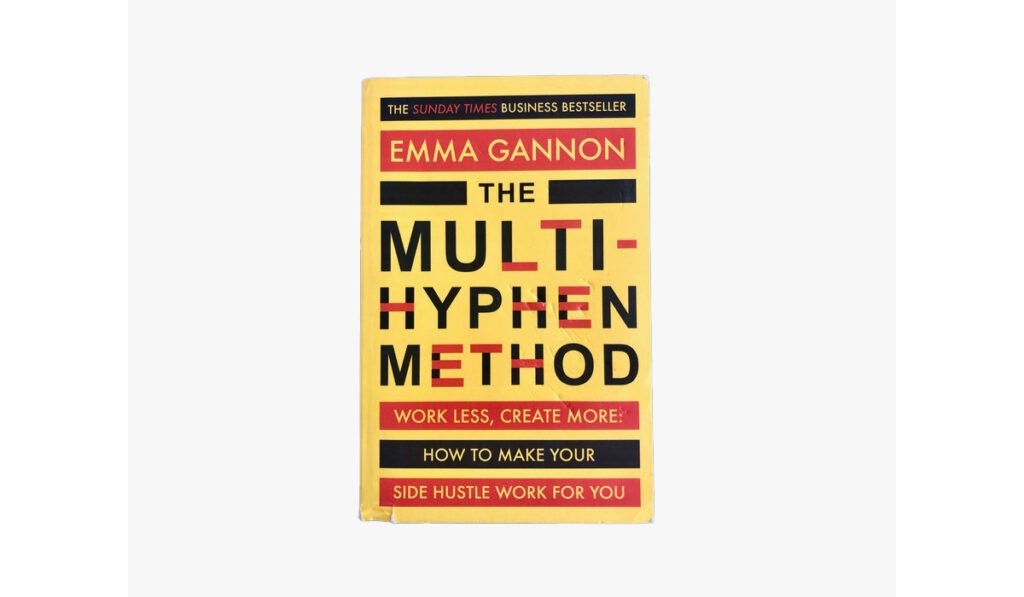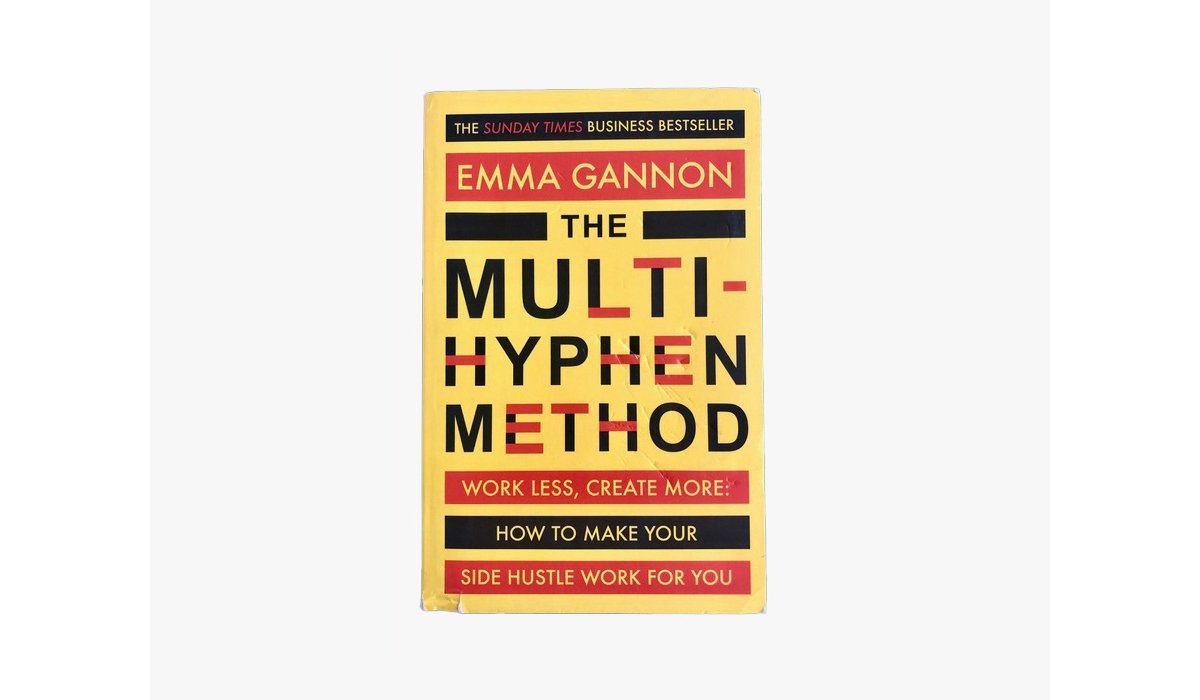In The Multi-Hyphen Method, Emma Gannon examines and advocates for a multi-hyphenate lifestyle. This involves designing a flexible work life made up of multiple strands of projects, interests, and income sources.
Gannon herself is a perfect example of a multi-hyphenate. Emma Gannon is an author of several non-fiction and fiction books, as well as being a blogger, podcaster, social media editor, and speaker. So, she is well-positioned to deliver some insights into “creating your own career puzzle.”

Drawing on research, real-life examples, and her own experiences, Gannon’s book is full of pragmatic advice. She also provides exercises at the end of several chapters to reinforce key messages.
This lets you reflect on their relevance to your own situation. While it was originally published in 2018, I recently read The Multi-Hyphen Method. While not a typical review, here are the key messages I took from it.
The Multi-Hyphen Method Review: My 5 Takeaways
1. You Contain Multitudes & So Should Your Career
A key feature of a multi-hyphenate lifestyle is combining multiple career strands that reflect your varied interests and talents. Being a multi-hyphenate does not mean quitting your current job tomorrow. It also doesn’t mean spreading yourself thin between hundreds of different projects or hustling 24/7 (that’s how you burn out as a freelancer).
Instead, the emphasis is on intentionally designing a career that pulls together the various strands into a cohesive whole that gives you flexibility and career longevity.
These strands don’t need to generate money or be purely professional. They can be your passions, hobbies, family, and self-care routines. You might be a paediatric nurse who writes novels in the evenings. Or a chef who also produces podcasts. Or a paramedic who runs a blog in your spare time. A multi-hyphenate lifestyle allows you to explore and express all areas of your personality.
2. Examine Your Own Concept Of Success
Success means different things to different people. However, in the workplace, and especially because of technology (here’s looking at you, Instagram), it’s easy to fall into the comparison trap. The Multi-Hyphen Method challenges some of the values of traditional workplaces and concepts of professional success.
It prompts you to reflect on what your definition of success is. Is it money, recognition, flexibility, doing something you love, the connections you make, having autonomy over your work? Identifying this will help you select and pull together the strands of your multi-hyphenate life.
3. Technology Is Reshaping The Way We Work
Technology has and will continue to change how and why we work—for better and for worse. On the one hand, it has been an equalizer in terms of providing access to opportunities and the way we approach work. We can work when we want, and from anywhere.
But on the other hand, technology can provide a constant source of comparison with others’ successes. Gannon argues that a multi-hyphen approach strikes a balance and makes technology work for us, and not against us, in our careers.
The nature of work is changing rapidly because of technology, including increasing automation in several industries. By learning the technology, and making it work for us, we diversify our skillset and ‘future-proof’ ourselves.
4. Flexibility In The Workplace Is Beneficial For Everyone
One of the main points that resonated with me in The Multi-Hyphen Method was Gannon’s arguments for flexibility in the workplace. She describes it as “one of the changes that is still treated as a massive perk rather than something that makes economic sense to a business”.
Traditional workplace expectations—a Monday to Friday job, sitting at your desk from 9-5, with no flexibility around personal commitments—don’t reflect changes in workplace technology and culture.
Apart from the obvious benefits to employees, there’s a lot for employers to gain by offering more flexibility. Gannon cites an HSBC study to back up this point. It found 89% of people surveyed said the most motivating factor for productivity at work is flexibility.
5. The Multi-Hyphenate Works Smarter, Not Harder
Adding more strings to your bow may just sound like more work. But Gannon explicitly advocates for the opposite. While it may initially require some extra time and effort, the objective of the multi-hyphenate lifestyle is to be able to work less and have more flexibility.
It’s about giving you the freedom to choose things that suit you and the fulfillment this brings you. Gannon discusses strategies for recognizing and managing burnout, switching off from technology, and, importantly, setting boundaries around your work and personal time.
Who Should Read The Multi-Hyphen Method?
I would recommend this book to anyone at the start of their freelancing journey. It’s definitely a good read if you’re unsure about taking the next step. The Multi-Hyphen Method offers lots of thoughtful prompts for freelancers to examine their approach to their work and the role it plays in their lives.
In saying that, more established freelancers may not find the book as helpful given their experience. But as someone making the move from a more ‘traditional’ career to freelance writing, I found The Multi-Hyphen Method’s key messages motivating and reassuring. It’s a practical guide that offers useful tips and tricks that I’ve already started to implement on my own freelancing journey!
You can find the book here (not an affiliate link, but this is where Emma’s website suggests you buy the book). Check out my review of another great book for freelancers, Falling Off The Ladder. Still need more guidance? We have a full list of the best freelancing books!
Kate is an Australian freelance writer now based in Europe. She has contributed to Freelance Ready as both a writer and an editor, drawing on her legal background to write about the regulatory and financial aspects of freelancing. She’s also an expert at finding the best flat white within a 5km radius! Learn more about Kate here.
Freelance Ready is reader-supported. That means some links on this website are affiliate links. If you sign up or make a purchase through these links, we may earn a commission.


